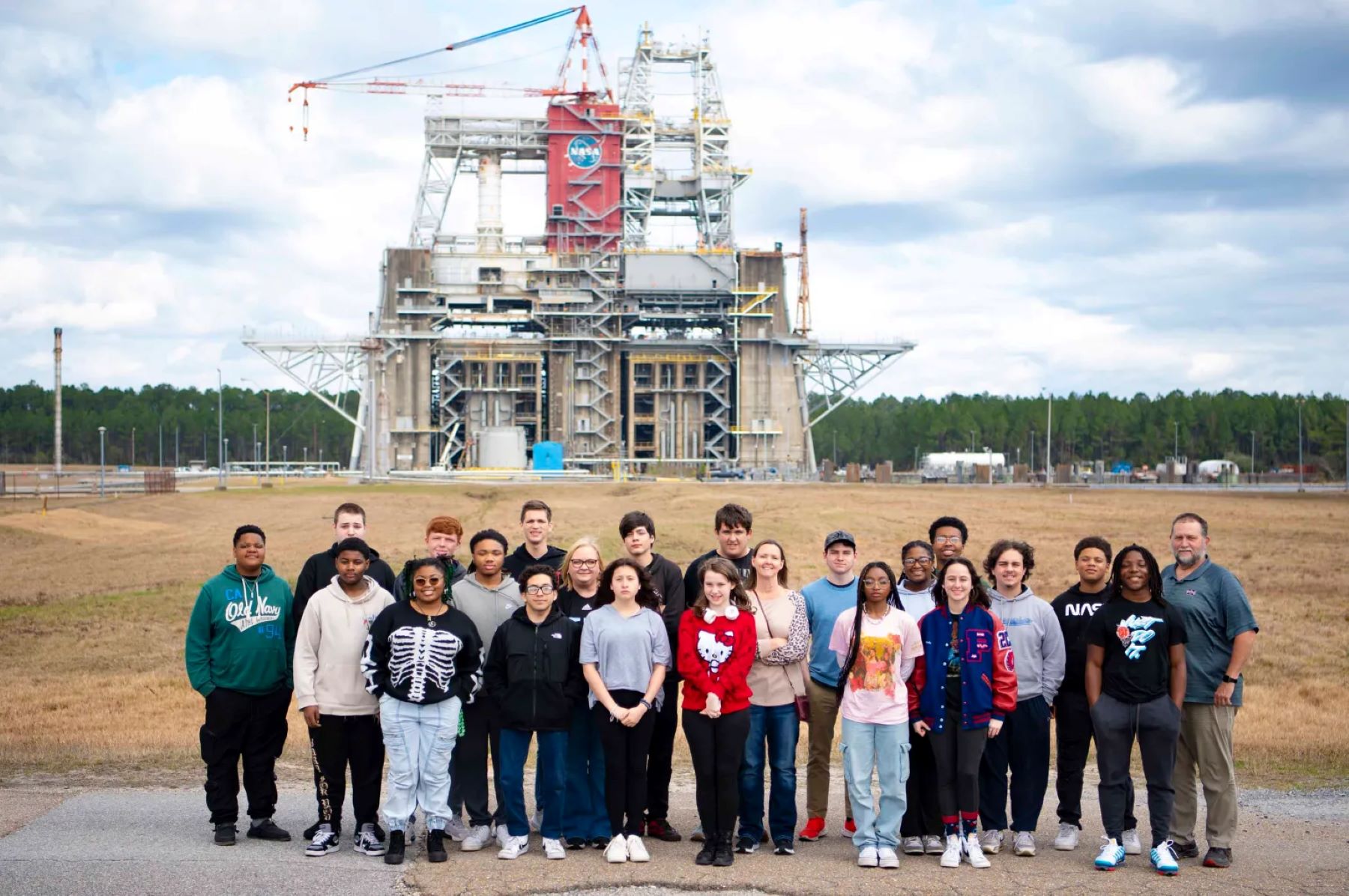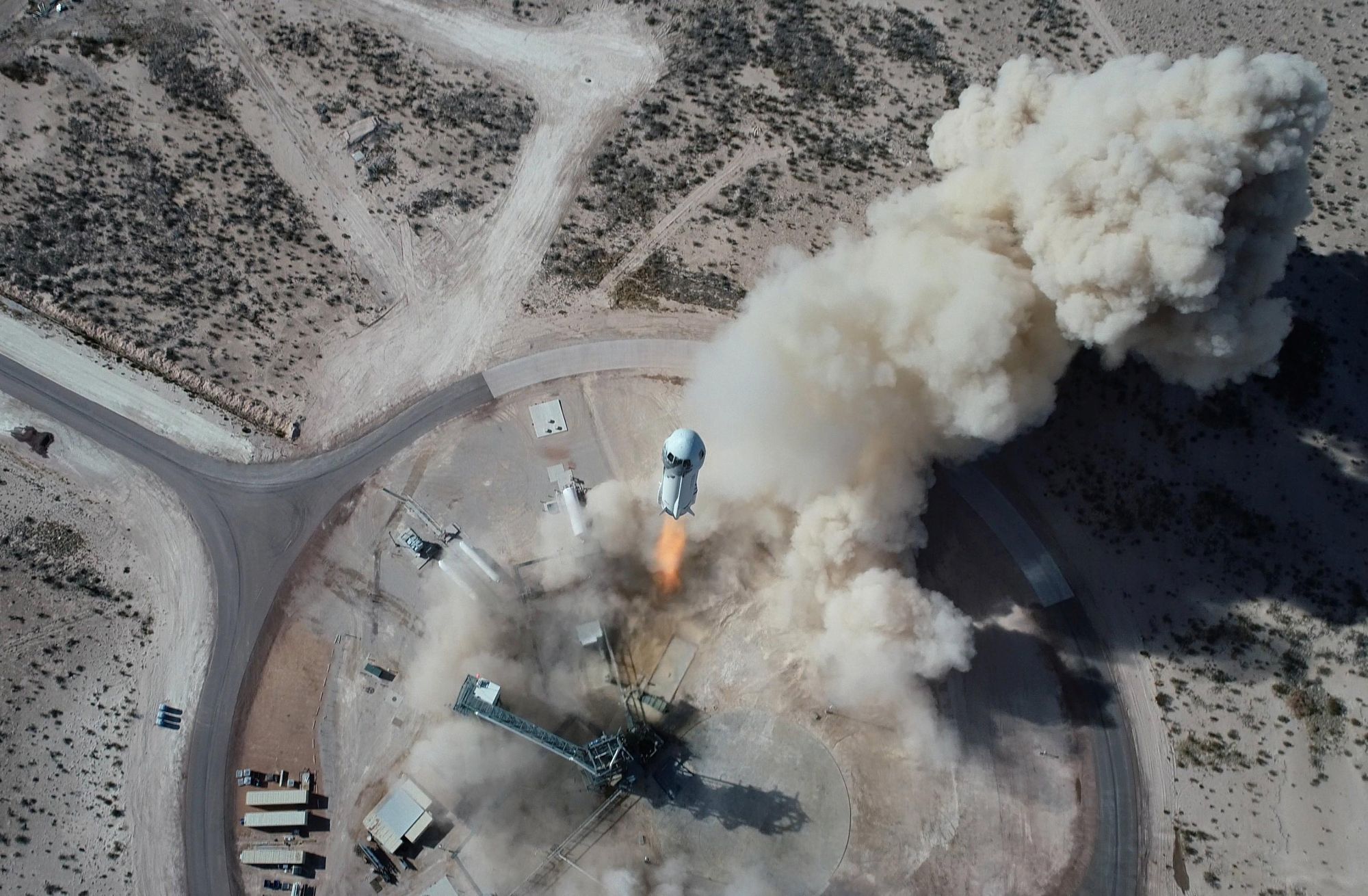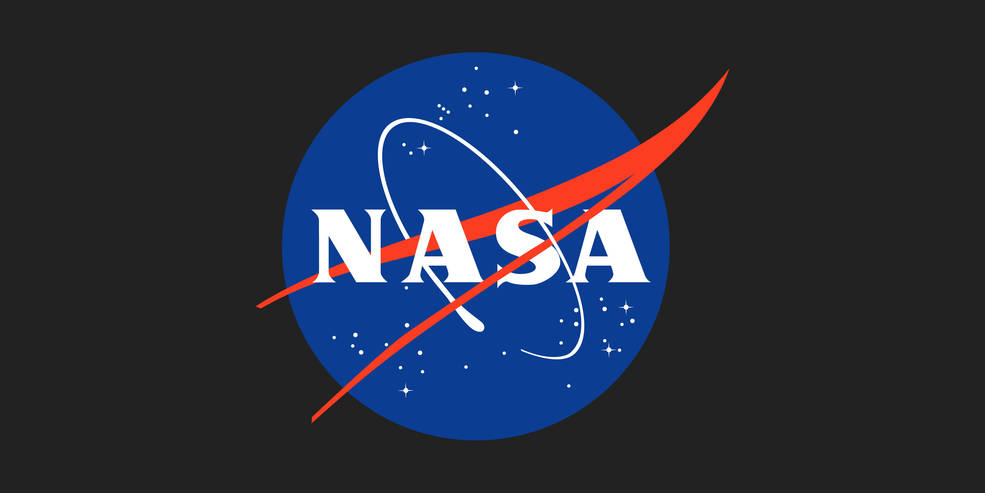Giant Batteries Deliver Renewable Energy When It’s Needed
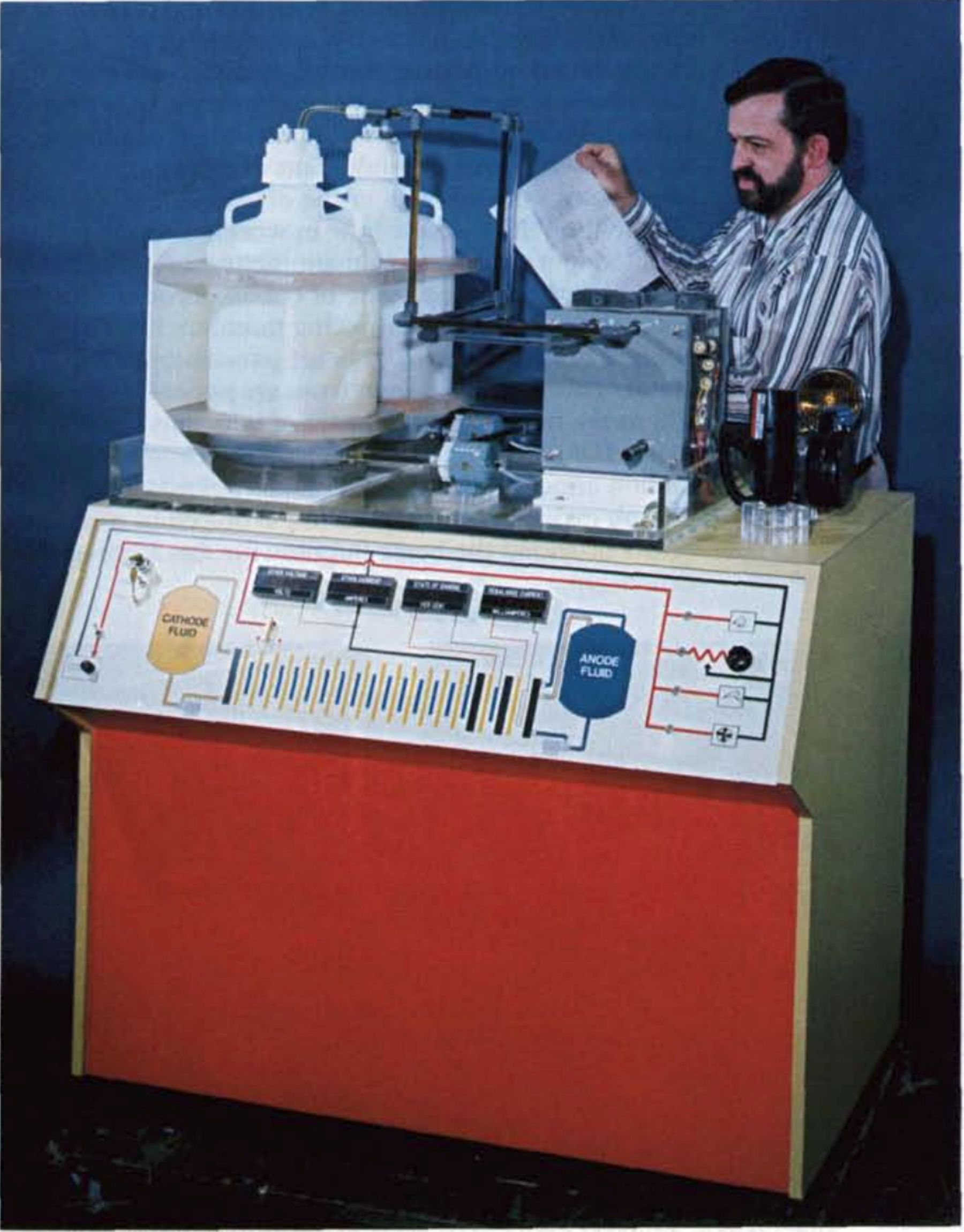
Solar power is abundant – when the Sun is shining. Wind power is steady – when the wind is blowing. However, creating a steady electricity supply from intermittent power sources is a challenge. NASA was focused on this problem more than 45 years ago when the agency designed a new type of liquid battery during the energy price shocks of the 1970s. While engineers continued over the following decades to develop flow batteries, as they’re now called, the technology has drawn even more attention in recent years, with the urgency of climate change powering a larger-scale transition to renewables like solar and wind.
It’s fair to say that flow batteries today owe something to the major push the technology received in the 1970s when a NASA team of chemical, electrical, and mechanical engineers developed an iron-chromium flow battery at Lewis Research Center – now Glenn Research Center – in Cleveland.
The NASA system involved two tanks of liquid electrolyte solutions, one infused with iron chloride and the other with chromium chloride. These electrolytes were pumped through the battery cell, triggering a chemical reaction through a membrane that separated the two solutions inside the battery. During charge, electrical energy was converted to chemical energy and stored in the electrolyte liquid. To discharge the energy, the process was reversed.
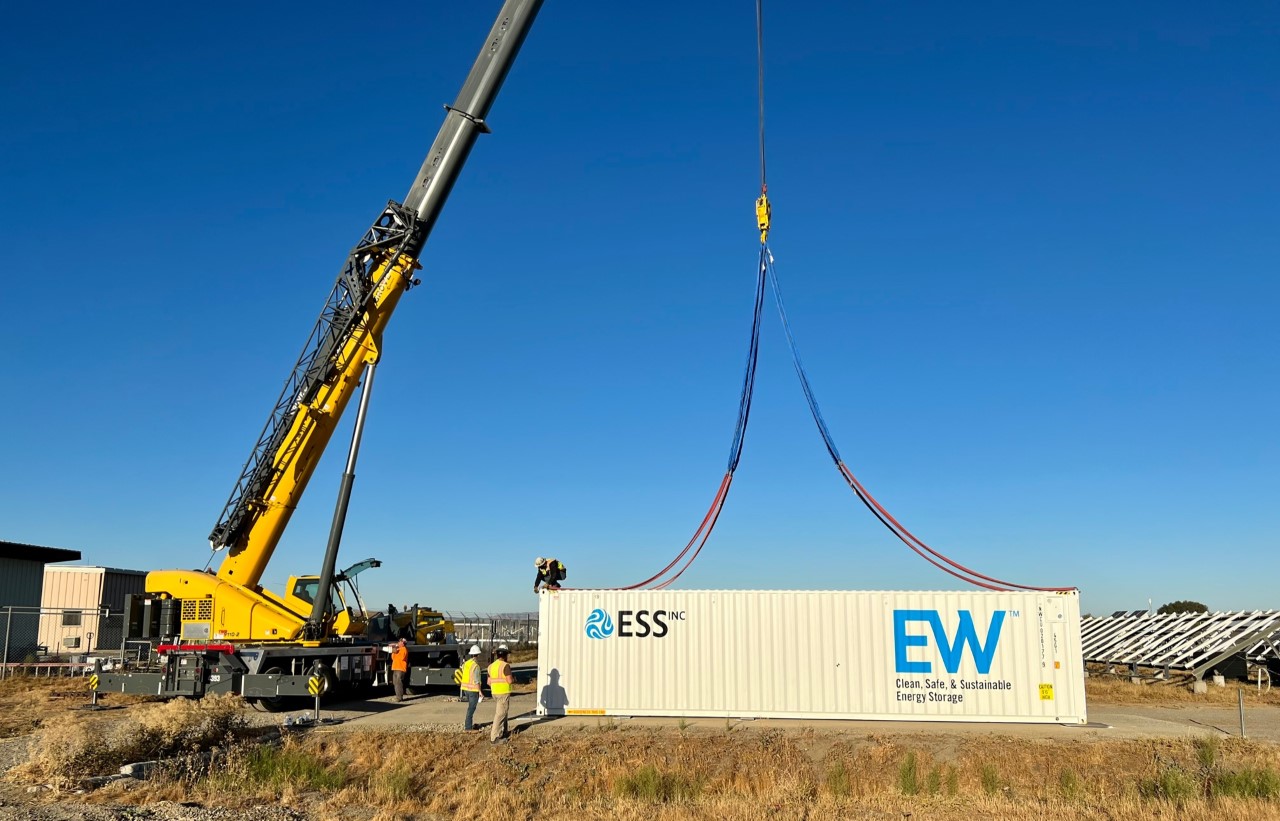
ESS flow batteries enable a steady supply of electricity from intermittent energy sources, such as wind and solar. They store up to 12 hours of energy and discharge it when needed. They can be built in shipping containers, like the one being installed in the picture here, or larger installations can be housed in a building.
Credit: ESS Inc.
Wilsonville, Oregon-based ESS Inc. built on NASA’s early work as the company developed its own flow batteries using only iron, salt, and water. When the ESS team began developing its battery in 2011, the company founders wanted to use iron as NASA had. They found they could pair iron with a simple salt solution, which was cheaper to obtain and easier to work with than the chromium mixture NASA had used.
ESS flow batteries are designed for power grids that are increasingly powered by intermittent wind and solar generation. The company’s systems store up to 12 hours of energy and are used to provide backup power to critical community facilities.

